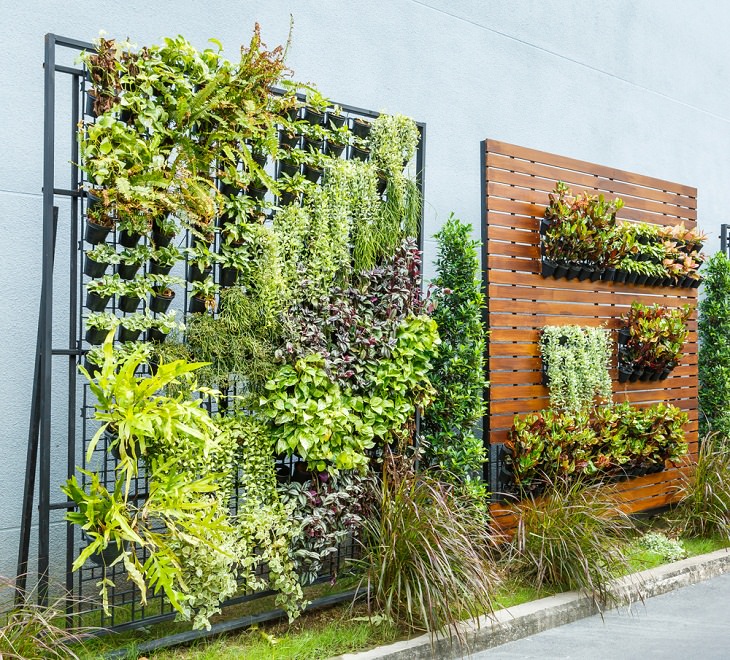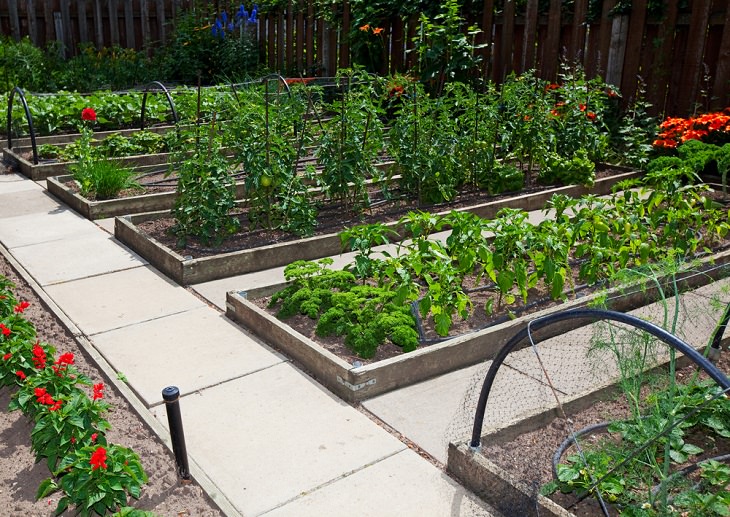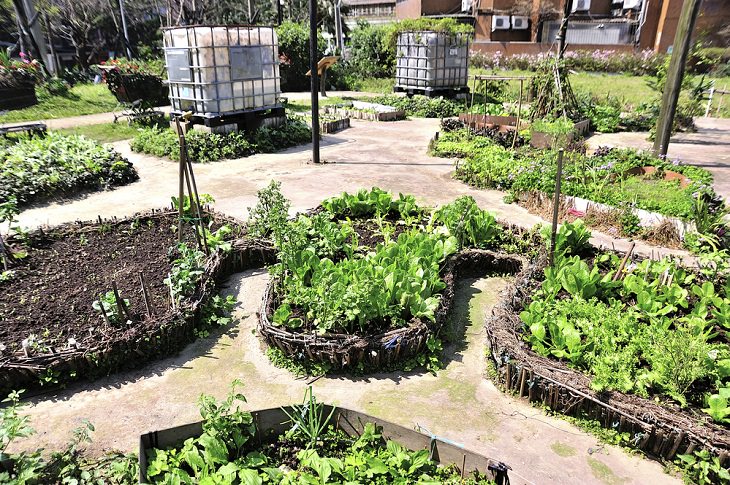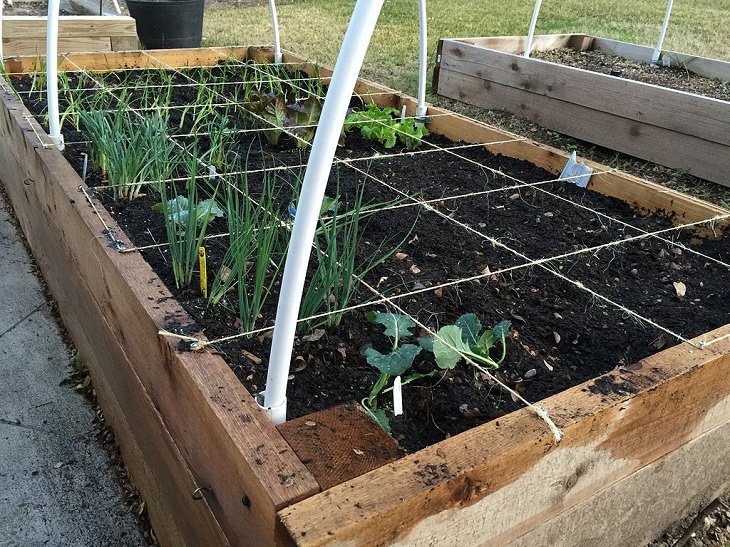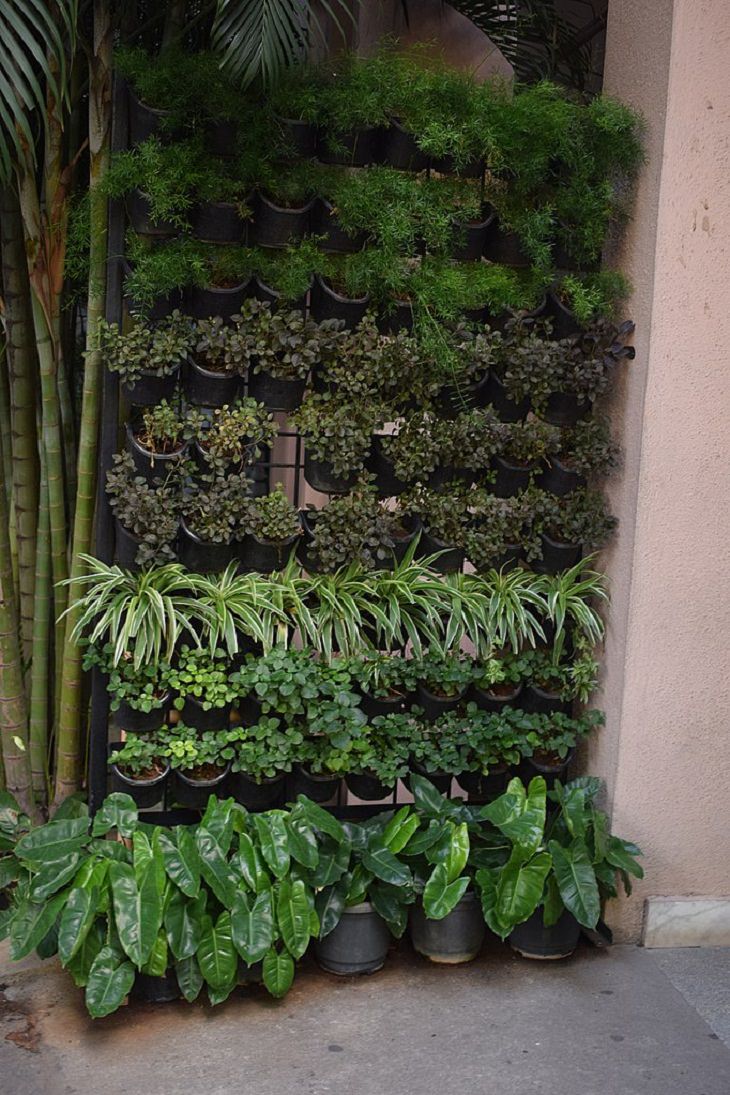1. Hydroponic Gardening
The word hydroponics comes from two Greek words, "hydro" meaning water and "ponics" meaning labor. Soil-less gardening or hydroponics isn’t a new concept but with the advancements in science and technology, it has become convenient to do so in your own backyard.
All you have to do is to purchase a set-up where your plants grow in a solution that provides them with their required nutrients and oxygen. Basically, you don’t plant them in soil. Do remember, though, that hydroponic gardening still requires a form of light – whether natural light or grow lights. This method of gardening would be perfectly suitable for you if you have enough room. You can even buy smaller set-ups and grow a variety of crops in them.
One of the biggest benefits of hydroponic gardening is that you can grow whatever plants you want at any time of year if you can ensure they are protected from natural elements. Furthermore, scientists have observed that because of the extra oxygen in the hydroponic growing medium, the growth rate of the plant is 30-50 percent faster than a soil plant, grown under the same conditions. Also, the yield of the plant is greater. Thus, this is a method that you can certainly come in handy for many gardeners.
2. Vertical Gardening
You might have heard about the idea of a vertical garden in recent times. It is a great option for people as they can garden anywhere regardless of where they live.
A vertical garden is a technique used to grow plants on a vertically suspended panel by using hydroponics. The structures you use can be freestanding or attached to a wall. You would be surprised to know that this concept of gardening has been used since ancient civilizations. They are a fantastic alternative to traditional gardening and many modern vertical gardens can last for decades.
Vertical gardening is perfect for those living in cities as you can grow food well on balconies, patios, and even indoors. A vertical gardening set-up with grow lights can be easily purchased from the market today to grow a vertical garden inside. Alternatively, you can opt for purchase pouches to be able to grow vertically.
Do note that if the crop is too heavy or needs great depth to the soil, the vertical garden won’t work as well. Regardless, vertical gardening is a useful method that can help you grow a variety of crops and will be best suited for fresh herbs and lettuce.
3. Raised Bed Gardening
Raised bed gardening has really become popular in recent years. The method suits those who don't have a lot of time for gardening but still want to grow more food in less space. Moreover, it looks stylish in your yard and is easy on your knees and back. Also, since the bed of the garden is raised, the soil is easier to care for, and weeds are easier to control.
There are multiple styles of raised bed gardening you can choose from - two-tier garden bed, simple cedar garden boxes, raised bed with benches, fenced garden bed, raised bed with legs, elevated garden bed, and much more. You can grow almost any vegetable in the raised bed and it will also serve as an asset to your landscape.
One crucial point to remember before you start planning your raised bed garden is that you must have a decent space to put a bed. If you have a small or large yard, a raised bed garden will be ideal for you.
4. Keyhole Gardening
Looking for a smaller gardening area that can be easily maintained? A keyhole garden is your answer. With this unique garden design, you can grow an abundance of healthy fruits and vegetables even with less-than-optimal soil.
The keyhole garden is so named because they’re shaped like an old-fashioned skeleton-key lock. They were first established in the 1990s to help people with inferior soil grow nutritious produce. In a keyhole garden, there will be a sliver carved out that will allow one to walk into the garden and care for it properly. They are especially useful in hot and dry regions and their low cost, low maintenance, and versatility make them a handy option for many gardeners across the world.
These circular raised bed gardens have larger outer circles where crops are planted. The center portion contains active composting baskets where kitchen scraps and greywater are added regularly for continuous replenishment of the soil. The soil underneath consists of rocks and twigs which help to keep moisture in the garden. Above them, you will have soil that is being nourished naturally from the compost. There are even small aisles built to provide access to the compost baskets.
Watch this video to understand how to plan and build a traditional keyhole garden.
5. Square Foot Gardening
Square foot gardening is a simple method of creating small, methodical, and highly productive kitchen gardens. This style of gardening was invented by backyard gardener and retired engineer, Mel Bartholomew in the 1970s as a better way to grow a vegetable garden.
Developing this garden involves carefully measuring gardening plots firstly and then dividing a raised bed into equal squares, roughly one foot in length each. To elaborate further, the garden will have a 4-foot (1.2 meters) square raised bed, divided into a grid of 16 squares. Vegetables, herbs, and flowers are then densely planted, in one or more squares. A special mix of soil is used that is equal parts peat moss, compost, and vermiculite instead of garden soil enriched with compost. Different seeds are planted in each square, in different numbers, in accordance with the space required for each plant.
A square foot garden is a neat idea for people who are short on space and can’t manage an extensive garden. It was designed to allow the gardener to produce more food with less effort towards nursing the garden and maximize space. Experts also state that the planting mix developed with this method allows for less water usage.
Watch this step-by-step guide on how to start square foot gardening.
6. Hanging Garden
We generally tend to assume that hanging gardens are meant only for gorgeous flowers. No. You can even grow plenty of fruits and vegetables in a custom-made hanging garden at your home. The point is, if you’re going to use basic hanging baskets for growing a flower, you can grow any shallow-rooted plant in them as well. Through this method, you get to create more garden space and also grow more food.
Hanging baskets are excellent for growing vegetables. Some of the food items that would grow well in a hanging basket are peppers, tomatoes, carrots, radishes, lettuce, kale spinach, herbs, cucumbers, and squash. Try and avoid growing root vegetables in them unless the pot is deeper than the standard hanging basket. Also, plants that produce heavy crops such as watermelon wouldn’t work well on hanging baskets.
Apart from the vegetables that you would be able to grow in them, hanging baskets will also add color and personality to any area you have erected them in. Keep in mind, though, that hanging baskets dry out fairly quickly if they are situated in the sun. Hence, you have to make sure you water them daily in hot summer weather.
7. Cold Frame Gardening
Cold frames are an ideal way to extend your garden’s growing season in spring and fall without putting a dent in your pockets. Basically, cold frames are bottomless boxes that are set over plants in the garden to protect them from adverse weather. They have a transparent roof to let in light and are usually built low to the ground with a hinge for easy access.
Cold frame gardening gives you flexible ways to grow spring greens or fall crops even when exposed plants fail. They help the gardener to cheat the seasons and enjoy more harvests. What’s more, you don’t need a giant space to make them work and can build them using things around the house. Cold frames protect plants from strong winds and retain heat and even a small, urban garden will benefit from this simple structure.
Seeds of crops such as radish, lettuce, endive, and scallions should ideally be sowed in a cold frame for an early or late harvest. Salad greens, like spinach or kale, would work well in this structure as well. You can raise them throughout the summer months too if you ensure that the cover is removed when warm weather arrives.
You can purchase a cold frame or construct it from timber and plastic. Here’s a step-by-step guide to help you make a cold frame garden for your home.
Share this post with someone who loves gardening...


